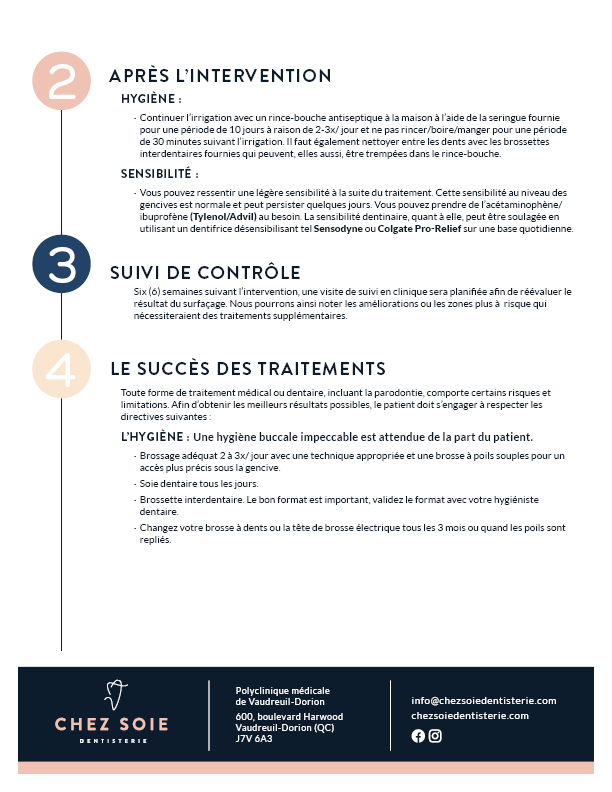 Gingival Disease Treatment (Periodontics)
Gingival Disease Treatment (Periodontics)
Severe periodontitis is usually treated with surgical procedures to reduce the buildup of bacteria around the teeth.
Surgical treatment of gum disease is mainly a last resort treatment available to the dentist to help reduce the damage around the teeth affected by periodontitis. The patient first went through the first phase of periodontal treatments deemed less invasive, that is to say by the “surfacing” treatment and the review of personalized hygiene techniques. If after all these efforts, the inflammation of the supporting tissues and the gums persists, the depth of the periodontal pockets must be surgically reduced in order to facilitate cleaning of the teeth. The dentist also makes sure to remove any hardened bacterial deposits (tartar). The main goal of this procedure is to stop the progression of gum disease and allow your entire mouth to be adequately cleaned.
It is possible that following this procedure, your teeth will be more sensitive to temperature changes temporarily.
If the hygiene measures taught are subsequently carried out carefully, the chances of retaining your natural teeth increase considerably. This way you can avoid early tooth extraction.
Postoperative care must be strictly followed to promote healing (in French).

